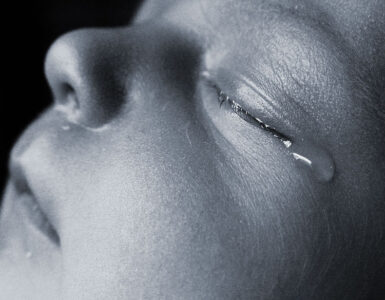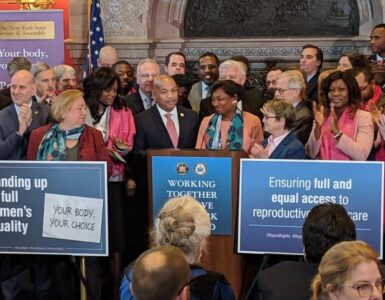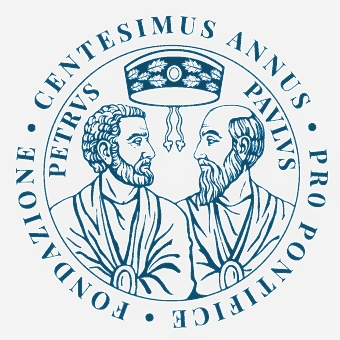“No State shall make or enforce any law which shall abridge the privileges or immunities of citizens of the United States; nor shall any State deprive any person of life, liberty, or property, without due process of law.”
(Amendment XIV, Section 1)
In 1973, the Supreme Court of the United States used the above 1868 amendment to deny the personhood of the unborn child and thus guaranteed a “right” to abortion.
Within the text of the ruling, we find the following by Justice Harry Blackmun:
The appellee and certain amici argue that the fetus is a ‘person’ within the language and meaning of the Fourteenth Amendment . . . If this suggestion of personhood is established, the appellant’s case, of course, collapses, for the fetus’s right to life would then be guaranteed
specifically by the Amendment.”
In plain language, this means that if the fetus in the womb is, in fact, a person, then the Fourteenth Amendment, which applies to the states, would guarantee the fetus a right to life and, thus, prohibit abortion.
Naturally, those of us who are pro-life need no court to convince us that the unborn child is a person. So how could the Supreme Court have denied this reality? Easy. In essence, the Court looked at the Constitution and could not find the word fetus and thus concluded that the Constitution did not protect such an entity.
I have always found it strange that many pro-lifers who want Roe overturned, glibly declare that should that happen, then the issue of abortion will redound upon the states. Even Antonin Scalia took this position.
But this is nonsense. If unborn children are persons, then states cannot arbitrarily decide to kill them, because they would be protected by the Fourteenth Amendment. Even Justice Blackmun understood this.
From a purely Constitutional point of view, is there clear evidence that the Court was wrong? Yes, there is. Joshua J. Craddock, a student at the Harvard Law School, has written a masterful refutation of the Court’s findings, which all pro-lifers should study. In the meantime, I will offer a summation of his findings.
Craddock divides his thesis into four areas: legal dictionaries of the time of the Fourteenth Amendment, English common law tradition, states that tried to determine the intent of the text at the time of its writing, and the intent of the actual framers of the amendment.
Craddock writes that the 1864 Noah Webster’s American Dictionary of the English Language defines the word person as relating “especially [to] a living human being; a man, woman, or child; an individual of the human race.” Craddock adds, “No dictionary of the era referenced birth or the status of being born in its definition of ‘person,’ ‘man,’ or ‘human being.’” The great English jurist and common law expert William Blackstone wrote that “life is . . . a right inherent by nature in every individual; and it begins in contemplation of law as soon as an infant is able to stir in the mother’s womb.” Clearly, Blackstone made the conclusion that the existence of life indicates personhood.
How did the states view the personhood issue at the time of the Amendment? Craddock points out that nearly every state in 1868 had laws prohibiting abortion. Craddock quotes James S. Witherspoon, who penned a 1985 St. Mary’s Law Journal about the personhood of the unborn child. Witherspoon declared that most of the states described abortion as “offenses against the person” and added that “there can be no doubt whatsoever that the word ‘person’ referred to the fetus.”
By the end of 1868, 30 states had anti-abortion laws on the books, and 27 of these punished abortion from the earliest weeks of a pregnancy. Witherspoon also noted that nine states that had ratified the Fourteenth Amendment saw abortion as either manslaughter, intent to murder, or murder. A case in point, after Ohio ratified the Fourteenth Amendment, the legislature reviewed its 1834 anti-abortion law and referred to abortion as “child murder.”
Whether it was manslaughter, intent to murder, or murder, either way the unborn child had to be considered a person in the eyes of the law. Craddock concludes that “state legislatures intentionally designed the statutes to protect the life of the child in utero and not merely to protect the mother’s health.”
Finally, what was the intent of the framers of the Fourteenth Amendment? Representative Thaddeus Stevens described the Amendment as a “superstructure of perfect equality of every human being before the law; of impartial protection to everyone in whose breast God had placed an immortal soul.” Representative James Brown asked this pertinent question: “Does the term ‘person’ carry with it anything further than a simple allusion to the existence of the individual?” The key Framer of the Amendment, John Bingham, told an Ohio audience that “no state in the Union should deny to any human being . . . the equal protection of the law.” Only a biased individual can fail to see the intent.
Joshua Craddock is not the first person to point out the injustice of Roe V. Wade. But after over forty years and millions of dead babies, it is important for all of us who value life to remember how seven unelected judges ignored the evidence and denied protection to the most vulnerable around us.
One would have thought that the horror of the Holocaust would have prevented any nation in the future from designating a certain group of people as “non-persons,” especially a nation that led the Nuremberg trials that condemned the Nazis. One would have thought . . .






























